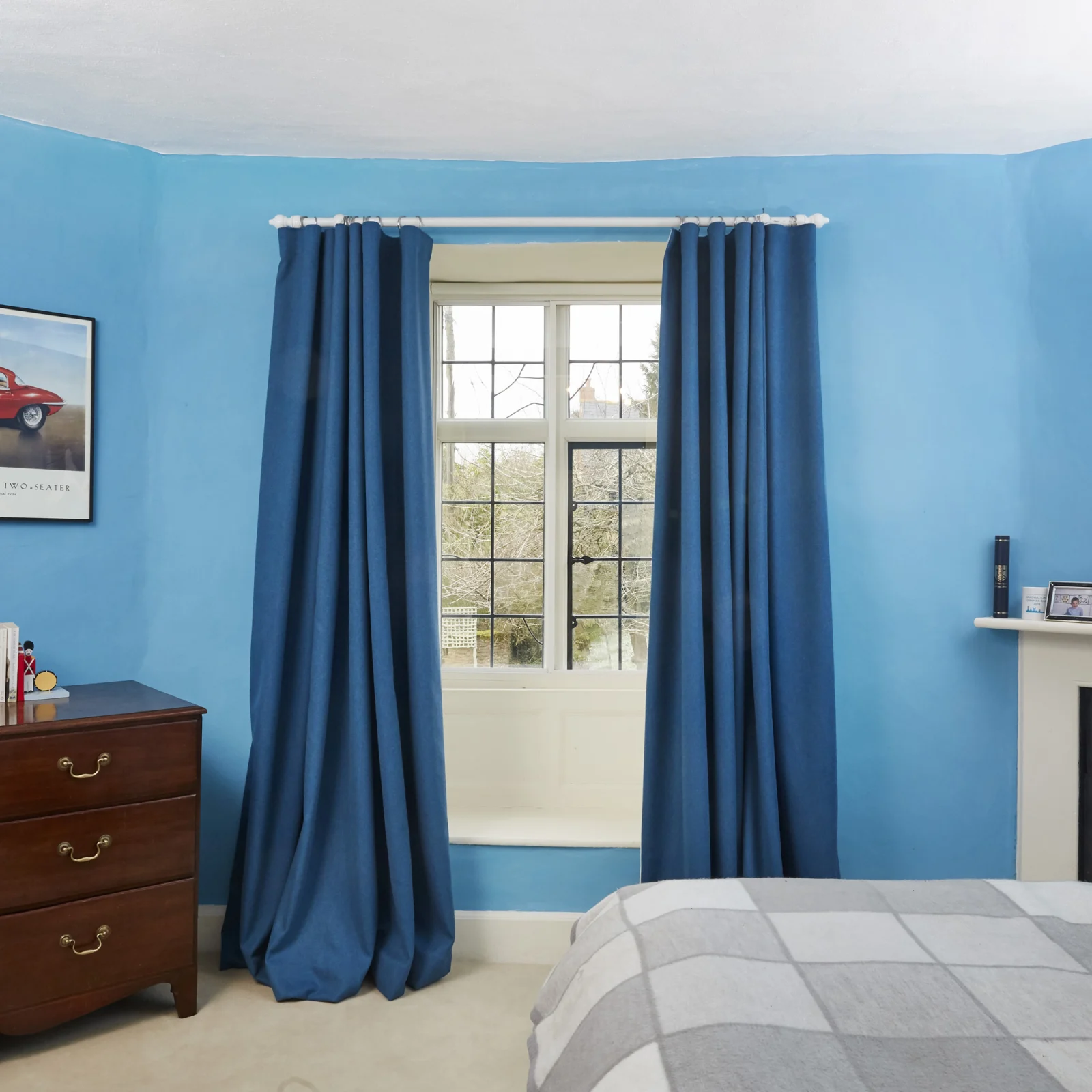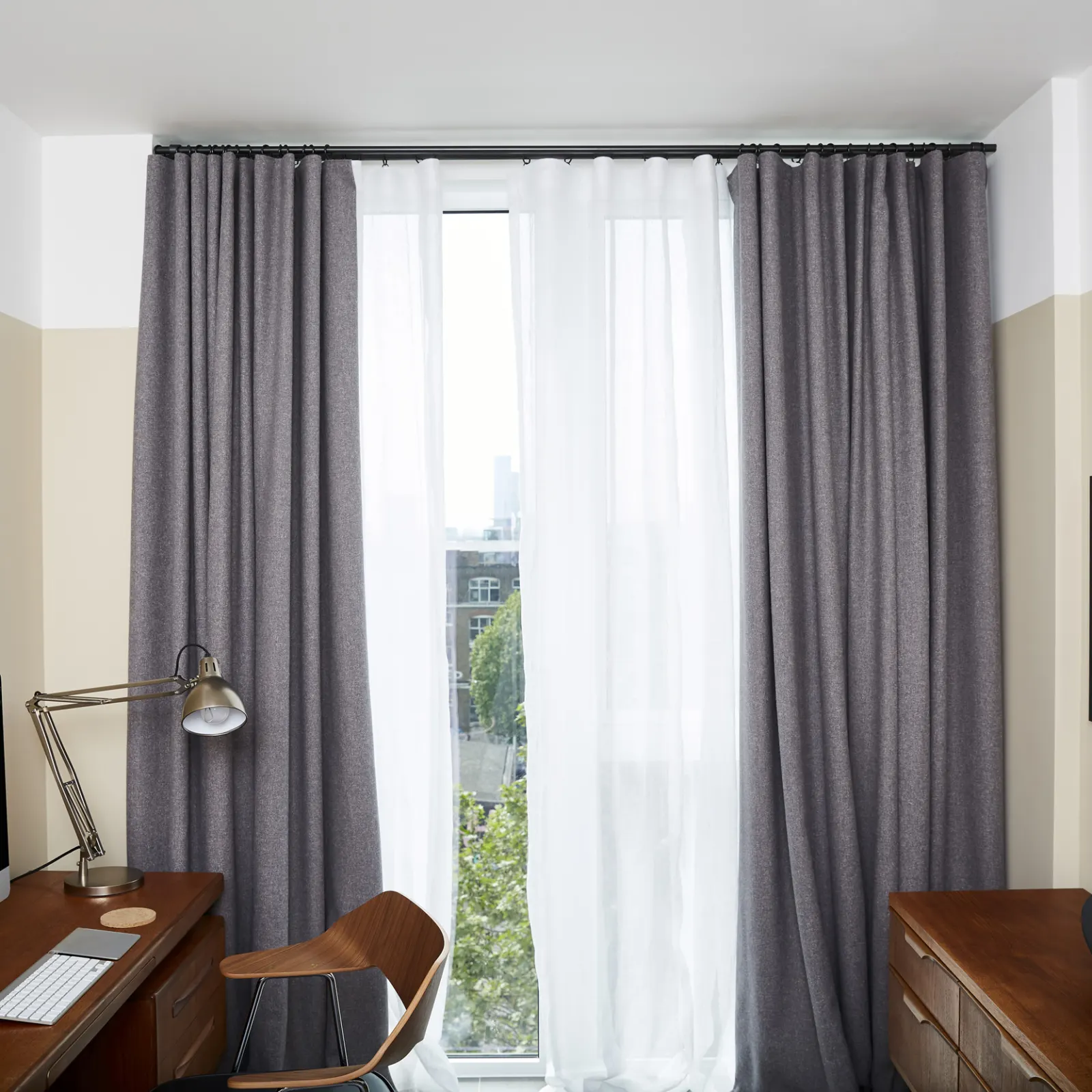Book a free virtual design consultation

5 Ways to Transform a Room with Colour Blocking
Colour blocking in interior design is a bold and eye-catching technique that involves using contrasting colours to create a dramatic effect in a room. By combining colours that are opposite on the colour wheel or have high contrast, colour blocking can add depth and dimension to a space and make it feel more dynamic and energetic. This technique can be used in a variety of ways, from painting walls and furniture to using colourful accessories and textiles, and is a great way to add personality and style to your home decor. Why not try colour blocking for your made to measure curtains and made to measure blinds?
In the early 1980s, a group of Italian designers and architects known as the Memphis Group burst onto the interiors scene at the Milan Furniture Fair. Their brash style was typified by geometric shapes and combinations of clashing solid colours with black and white stripes. Forty years later, the black and white stripes may have taken a back seat but the use of colour blocking in interiors is all the rage again. Done well, colour blocking can create stunning, individual spaces full of personality. Whether you opt for a subtle, monochromatic colour scheme or a bold and vibrant palette, colour blocking is sure to make a statement in any room.

01. It can disguise awkward proportions
Painting walls in different colours can radically affect our sense of space and improve a room that doesn’t have great proportions. For example, if you have a long, thin room, use a bold colour on the shorter walls and a lighter, more neutral tone on the longer walls. If you have windows on the shorter wall, opt for made to measure curtains or made to measure blinds in a fabric that matches the bold colour you’ve chosen. This will make the room feel squarer and wider. Perfect for bedrooms or living rooms where you spend a lot of time.
Alternatively, if your room has a chimney breast, use a stronger colour on the recesses on either side to add depth. This will give the illusion that the walls are being pushed back and if you have shelves in the recesses, a stronger colour will do a great job of showing off books and other objects. Perfect for a living room with a feature fire place or chimney breast.

02. It can take the place of architectural features in modern homes
Many modern homes lack features such as picture rails, cornices and other details that owners of older properties take for granted. To introduce interest, try painting a strong colour on the bottom half of the wall, up to dado height and a lighter colour above. This effect is particularly striking if the horizontal line is continued across woodwork and doors. The result will be a totally individual room that really makes a statement.
In a bedroom, this idea can be extended so that the horizontal line rests at headboard height. The stronger colour on the lower section of the walls creates a greater sense of intimacy and a feeling that the walls are wrapping around the bed. Why not match your made to measure curtains or made to measure blinds to either colour for a bold statement but also to tie the walls and windows together.

03. It can help zone an open place space
A successful open plan living space (or broken plan if we’re going to be truly up to date) is one that is skillfully ‘zoned’ - in other words, a space that has clearly defined areas for different purposes such as eating, cooking and relaxing. One way of zoning is to use different types of flooring, so perhaps tiles in the kitchen and wood flooring in the dining and living areas, with a few rugs thrown in. However, There’s an argument though that this can make a space feel smaller and more cluttered. Better to stick with the same flooring throughout, and zone the space through lighting, the positioning of furniture and colour. So, for example you can create a cosy corner by painting two adjacent walls the same colour. You may choose to use the colour on the lower section of the walls as described before to draw the eye down and make the corner even more intimate - perfect for a dining space or somewhere to curl up and read a book.
You can also define an area for a home office within a larger space. What about creating a cube of bold colour in a corner by painting the two adjacent walls, ceiling and floor in the same colour? This will actually make a space feel larger and will certainly add interest to a room.

04. It can introduce an element of surprise
Colour blocking also works really well where it’s least expected. Paint the inside of wardrobes and built-in cupboards as well as the backs of the doors in a vivid colour that contrasts with the rooms they’re in. A device guaranteed to make you smile every time you open the door!
An effective way to draw attention to an attractive window (as well as distract from a less than attractive view) is to choose made to measure curtains and made to measure blinds in one of our lovely fabrics and then paint every part of the window - sill, frame, glazing bars - the same colour. If your windows are set within a reveal, paint that the same colour too. The windows will look larger and become a real feature of the room.

05. It can make a space more fun
Don’t be constrained by squares. You can colour block using other shapes, with straight edges or curved. As we’ve mentioned before, triangles of colour work brilliantly in children’s bedrooms and are even more fun if they extend onto the ceiling.
But this idea can be used in grown up rooms too. What about choosing three or four colours to divide up a wall behind a bed, using diagonal lines to separate them? Make sure one of the colours matches that used elsewhere. Go for pastel hues or different tones of the same colour for a more understated look. Or go bold if you dare!
Need some more inspiration?
Take a look at our blogs for tips on styling with colour and choosing colourful curtains and blinds.